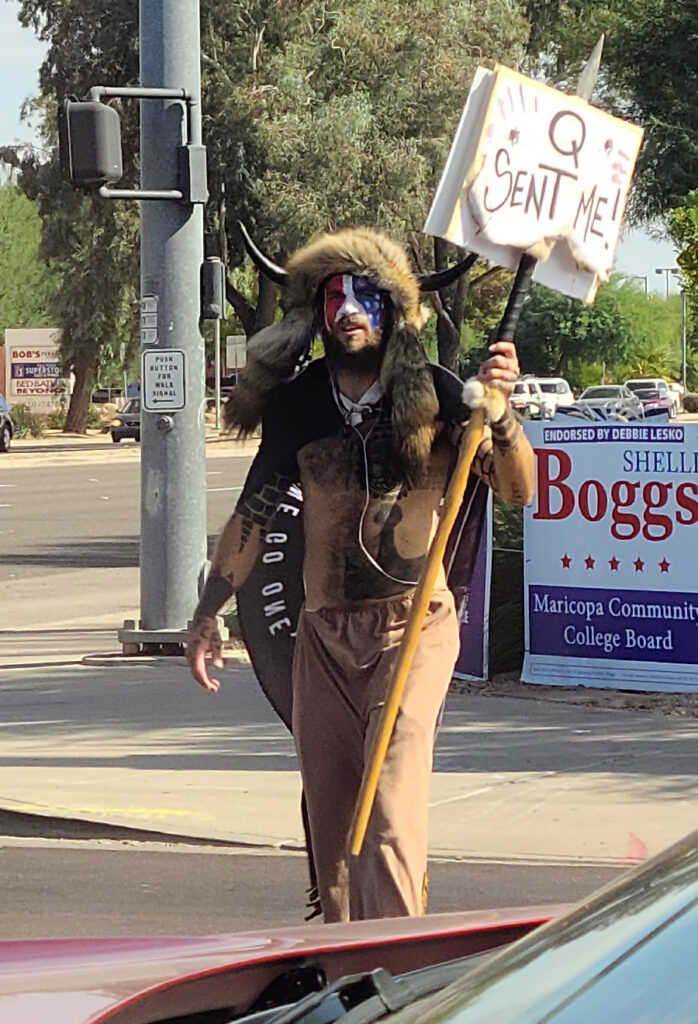- Introduction to Women and Psychedelics - July 26, 2024
- Eight Frequently Asked Questions About Ayahuasca Globalization - February 13, 2024
- Ten Tips for Standing in Solidarity with Indigenous People and Plant Medicines - January 18, 2024
The Global North is experiencing an explosion of interest in psychedelics, which has led therapists, doctors, artists, businesses, non-profit organizations, and researchers to embrace sacred plants as tools for improving health and enhancing creativity.
Some people say we are living in a psychedelic revolution. A psychedelic renaissance. A global breakthrough.
But wouldn’t that be too big a responsibility to put on substances?
When we discuss psychedelics, we are not talking only about substances. We talk about culture, spirituality, traditions of the Global South, and the practices protected over centuries by Indigenous peoples. We talk about cultural and financial exchanges. Ideologies. Politics. And all these dimensions of psychedelics bring great challenges about which we need to have awareness and a capacity for critical and self-reflexivity.
We cannot forget about geopolitical issues, neocolonialism, the weapons industry, wars for land and oil, exploitation of poor workers, patriarchy, and social inequality. We are not going to solve these things with an individual therapy session or an insight with psychedelics only.
Psychedelics can be positive, individually, to treat specific ills. But I need to tell you: psychedelics are not going to save the world.
Psychedelics can be positive, individually, to treat specific ills. But I need to tell you: psychedelics are not going to save the world. A good part of the problems we live with today, including the millions of people who have depression, are problems that have deep social causes. The narrative of the salvation of the world through psychedelics leaves aside the complexity of the psychedelic experience and its intimate relationship with the associated social and cultural contexts, very important even for modulating the individual experience and endowing it with meaning.

What is Conspirituality?
We like the name psychedelics—which also means “Mind Manifesting”—but we must recognize that it would be better if some Western minds did not manifest at all. A sick mind manifesting can be a problem, and psychedelics can even make individual and social problems worse.
To give just one example, we all can remember the case of Jake Angeli, the famous “QAnon Shaman” who stormed the US capitol and attempted a coup against Biden’s inauguration. A very psychedelic guy, he organized peyote rituals, only eats organic food, and is a “spiritual” person. This guy who wanted to change the world with psychedelics is also a member of the QAnon movement, which believes that there is a conspiracy of immensely powerful people who extract the blood of babies in order to get adrenochrome and destroy Donald Trump, who would be an envoy from God to protect the planet Earth.
And this is not an isolated case. There are thousands of people in the psychedelic universe with a similar profile. Similar beliefs. And unfortunately, this kind of worldview has also been exported by the Global North to the countries of the Global South.

These people question anthropogenic global warming and the Western scientific establishment, in favor of conspiracy theories and a self-education coming from content produced by extreme right-wing influencers and shared ostensibly on social media. Figures like JP Sears, David Icke, Jordan Peterson, and Joe Rogan are constantly quoted and have their content published by people all over the world.
“Reptilians theory,” “5G danger,” “COVID as Chinese virus created in lab to destroy the West,” “illuminati conspiracy,” “Bill Gates’ microchipping all humans,” are all slogans that provide particular interpretations of the social, environmental, and health crises experienced in recent years, all born and disseminated from the Global North and also frequently believed and employed by people from the Global South.
Some anthropologists have named this profile of people. And they coined the term “conspirituality” (Ward & Boas, 2011).
In short, Conspirituality is a term that designates the overlap between New Age (and sometimes also psychedelic) spirituality and wellness culture with denialist stances and conspiracy theories.
In short, Conspirituality is a term that designates the overlap between New Age (and sometimes also psychedelic) spirituality and wellness culture with denialist stances and conspiracy theories. Of course, not all people who are part of the New Age or the psychedelic universe are conspiritualists. And not all far-right and negationist people are connected to the New Age universe and fans of psychedelics.
But there is a not insignificant portion of people for whom there are elective affinities between New Age, negationism and conspiracy theories.
To refine the concept, it can be useful to define negationism and conspiracy theories.
Nothing Is As It Seems
“Negationism” is a term that reveals fascinating aspects of conspirituality. One denies science, one denies historical facts, one denies public statistics, one denies everything. In short, one denies, which also means to oppose the status quo. And in this sense, negationism, can have an almost irresistible appeal both to portions of the population that resent the advance of progressive agendas and the strengthening of minority social movements while they remain stagnant or experience situations of economic crisis, and to young middle-class whites seeking their voice, or even to elite sectors that seek to justify privileges.
In turn, conspiracy theories are characterized by the idea that there is a hidden force, a nefarious plot that controls society at the national or even global level. “Conspiracy theories” are mental constructs that are different from mere conspiracies, which can be real and happen at different social levels. According to conspiracy theories, socially relevant and impactful events never happen by accident, but are carefully planned by elites who hold power. According to these ideas, nothing is as it seems and everything is interconnected, obeying the decisions of powerful agents invisible to the mainstream media. Media that would try at all costs to manipulate and hide the truth from people. Moreover, they are usually improbable and scientifically refuted “theories.” We can cite as examples flat Earth “theory” and the claim that wearing masks protects no one but is part of a diabolical plan to end people’s identity.
The vanguard has become dystopian. This also involves the co-opting of terms and symbols associated with progressive vanguard movements, such as “civil disobedience,” “counterculture,” “revolution,” and “environmentalism.” The conspiritualist vanguard then calls for the necessity of self-education and for people to “research” on their own (via YouTube channels and internet forums) to understand what is going on. Conspiritualists are all the time talking about “revolution,” “great change,” and “transformation.” This desired transformation, however, will not be promoted by organized social movements, but by the transformation of the self, the “awakening of consciousness” and the “coming out of the matrix.”

1. Appeal to the Idea of the Matrix
The idea of the “matrix” is prominent amongst conspiritualist groups. It refers to the science fiction film of the same name, and very specifically to an extreme right-wing reading of the film. There is already interesting literature on this, which shows how the film matrix was co-opted by the extreme right, a cooptation that also happens with other symbols, icons, and cultural productions that are originally born from a progressive niche, as is the case of vaporwave aesthetics. Under the pseudonym Mencius Moldbug, Curtis Yarvin was the first to associate anti-democratic and fascist politics with the metaphor of the movie Matrix (Jones, 2019). The term “red pill” has since come to be adopted by incels, neo-Nazis, radical Trump supporters, and conspiracy-minded billionaires.
According to conspiritualists, in their vision of a dystopian Neoplatonism, beyond the “Mayan veil” of the not at all glamorous daily life and the bills to be paid, there is a more important and more real reality that justifies exceptional conducts and, in extraordinary cases, atrocities.
2. An Answer to the Crisis of Modernity
Given the modern problem of the bifurcation of nature analyzed by authors such as Latour (1994), many people feel the need for the reconnection of the human being with nature; together with the crisis of institutions and the crisis of science, and the permanent individual need for existential answers to the established social conditions, there is an impulse of the conspiritualist worldview, which reduces complexity and gives meaning to social life. Conspirituality also offers the possibility of subjective “integration” of the individual with higher forces, nature, non-human beings, and the cosmos. Conspiracy theories provide simple explanations for complex situations. In the face of immense insecurity and uncertainty about COVID-19, for example, it may be tempting to think that China wants to wipe out the West and, therefore, manufactures the coronavirus in a laboratory.
3. Narcissism
Incipient research already identifies a high degree of narcissism in the so-called “young mystic” (Joiner, 2017). This tendency toward a self-centered worldview can be seen in the prevalence of New Age discourse focused on the individual, and in the liberal and ideologically oriented interpretation of mystical theses that the “way points inward,” “as above so below,” etc. There is also an “ethic of non-judgment” prevalent in the New Age circuit, which prevents people from criticizing absurd, prejudiced, or even genocidal worldviews. This phenomenon is driven by the Internet social networks and their sometimes exhibitionist character, which incessantly stimulates the search for followers and the production of engagement.

Join us for our Queering Psychedelics: Intersectionality, Healing, Spirituality and Liberation course, August 28th – November 6th, 2023.
4. Response to Personal Traumas
Our field work has also indicated that a significant portion of conspiritualists are people who see in this discourse a way to respond to their own past traumas. Jake Angeli’s own example is an illustration of this profile. Problems with his father, with drugs, etc. The conspiritualist discourse allows the individual to shift the explanation of his problems to society, and to blame other people, groups, or occult and evil forces. In our field work, we identified people who adopted a conspiritualist worldview after personal and family traumas.
5. Influence of Gamer Culture
The video game subculture is very prodigious in building alternative narratives; avatars, intergalactic plots, idea of mission, communities that orbit around games, very interactive forums on the deep web, idea of mastering, level evolution, clan formation, and creation of anonymous forums, etc. In short, there are a number of elements of gamer culture where the virtual world ends up interfering in the real world. As an anthological line from the cyberpunk classic Neuromancer (Gibson, 2019) puts it, for many young people immersed in the virtual universe, the real world becomes a “prison of flesh,” less real than the simulation. An important example here is the “blue whale” game, created in anonymous internet forums and disseminated via networks, which has led several young people around the world to suicide.
6. Distorted Desire for Social Change
In a way, the message of conspirituality is social transformation. An ambitious, planetary, global social transformation. A social transformation via consumerist intimate reform. Democratic reforms, redistributive and predistributive measures, as well as grassroots social movements, are something outdated, to be overcome. The “new age” aims to overcome class antagonisms and the “polarity” of social differences and inequalities, through individualistic mysticism and consumption.
7. Misogyny
A common trait among conspiritualists is the strong machismo, that usually comes along with racism and homophobia. To give one example, there is often, in this universe, an attempt to defend the “tradition,” the “world that used to be good,” etc. The idea of a return to a reality that once was or should be is an important and illusory motto, as well as the nostalgia for a supposed ancestral patriarchy.
8. Neuroplasticity
Shamanic technologies are amplifiers of what the person carries in his/her psychic constitution; psychedelics and sacred plants are pluripotent, that is, they can precipitate changes in any direction, not only towards progressive worldviews; mystical trance rites can lead to a change in the self, but not necessarily to a change towards a more inclusive posture open to diversity, but also to the resurgence of autocratic and intolerant postures (Pace & Devenot, 2021).
Shamanic technologies are amplifiers of what the person carries in his/her psychic constitution; psychedelics and sacred plants are pluripotent, that is, they can precipitate changes in any direction, not only towards progressive worldviews; mystical trance rites can lead to a change in the self, but not necessarily to a change towards a more inclusive posture open to diversity, but also to the resurgence of autocratic and intolerant postures.
9. Cultural Appropriation
Although the New Age and Psychedelic Renaissance phenomena are fundamentally white, urban, linked to middle or elite and highly educated strata of the Western population, a good part of the traditional religious matrices that feed the desire for spiritual and psychedelic consumption, such as the Peruvian ayahuasca vegetalism or the practices with mushrooms in Sierra Mazateca, come from the global periphery and have as practitioners non-white and economically underprivileged people.’
Cultural appropriation is necessary for the massification and large-scale commercialization of products and services from this open market in dialogue with conspiracists and the far right. There needs to be connection with original peoples for the circulation of practices and products connected to their ancestral cultures and knowledge. Just not to the point of leading to empathy for their struggles and demands.
The discourse of conspiritualists refers to the appropriation of cultural elements from traditional societies. These traditional societies can be either mythical or imaginary, like Atlantis or Ratanaba, or real, like the native peoples who suffered the ravages of European colonization. And in the conspiritualist perspective, these societies that exist in a state of struggle and resistance against forces of genocide and colonial oppression are stripped of their agency and their knowledge is appropriated, often with generalizing arguments that “everything is universal,” “everything is connected,” “we are all brothers,” “we are all lightworkers,” etc.
This implies not only capitalizing on the evident appropriation that is made of the culture, living beings, and objects of these “exotic” societies, but also producing a simulacrum of the assimilated practices.

Psychedelic Capitalism
While cultural exchanges are a natural and integral part of the social relations between native and non-Indigenous peoples, cultural appropriation excludes reciprocity and recognition of native cultures, even relegating them to a folkloric place and turning their histories and cultures into merchandise, without paying, of course, the proper royalties.
This reflection deserves to be deepened and is mentioned only in passing here, but it calls our attention how ayahuasca, peyote, and other sacred plants originating from the Global South, Amerindian shamanism, “African magic,” “Indian spirituality,” and ancestral and regenerative agroforestry practices are uncritically sold as decolonial merchandise, feeding the imaginary of middle classes from the white West without producing significant changes in the lives of the traditional populations to which they make reference and indiscriminately homogenizing them.
Unlike the Western counterculture of the 1960s, the “Psychedelic Renaissance” is a political and cultural phenomenon that is ideologically integrated into globalized capitalism. For this reason, instead of the term “Psychedelic Renaissance” we find more credible and realistic the idea of “Psychedelic Capitalism”; that is, the rationalization of the traditional use of psychedelics that is accompanied by the advance of science toward the production of drugs, the creation of a celebrity system within the field (with a list of the top 100 influencers of the psychedelic world), and the commodification of these substances and their associated rites through cultural appropriation.
Today, socialites, celebrities, and Silicon Valley businessmen are enthusiasts for the visionary powers of psychedelics, and one of the most influential of them, Tim Ferris, said that almost without exception he doesn’t know any billionaire who doesn’t regularly consume psychedelics.
How Can We Do Better?
As we can see, the psychedelic field is full of challenges. If we want to overcome these challenges, we need to have the courage to think about psychedelics beyond the promising results of clinical trials and major scientific conferences on the topic. We need to think about the use of psychedelics in its social, cultural, and political implications in people’s lives.
There are at least 5 ways in which we can do differently:
Embracing the Difference
Instead of propagating the idea that we are all the same and one huge global psychedelic community, we can recognize that we are quite different beings. There are large differences and social inequalities between white scientists in the Global North and traditional healers in the Peruvian Amazon.
Instead of propagating the idea that we are all the same and one huge global psychedelic community, we can recognize that we are quite different beings. There are large differences and social inequalities between white scientists in the Global North and traditional healers in the Peruvian Amazon.
There are differences between white billionaire psychedelic enthusiasts and black women from Brazil who have to take two buses a day to get to work. Such differences also represent inequalities in benefits, labor exploitation, environmental destruction, epistemicide, etc.
By recognizing the differences in the field, we can open ourselves to hear voices that have been silenced, learn from cultures that have been decimated, and take a more productive approach to building bridges and alliances between different forms of knowledge.
Cultivate Reciprocity
The immemorial guardians of sacred plants and psychedelic cultures are the traditional and Indigenous peoples.
It is important that there are reciprocal relationships already established between psychedelic enthusiasts in the Global North and traditional communities. When participating in a ritual with psychedelics, for example, you can seek to find out what relationships local leaders have with Indigenous leaders. You can always give preference to supporting NGOs, conferences, and research committed to giving something back to indigenous peoples, as is the case with the Indigenous Reciprocity Initiative, for example.
You can travel to the Global South, learn another language, get to know other cultures, and donate to social movements that support Indigenous struggles for land.
Include BIPOC People and the Queer Community
Centuries of colonial oppression, patriarchy, and heteronormativity also leave their mark on the psychedelic field. Thousands of BIPOC and queer people suffer from social stigma and prejudice in the psychedelic universe. It is important that the psychedelic renaissance can think about social justice and include all people. To do so it is crucial that it can look at the social inequalities of the West, have empathy for the social causes of minorities, and build dialogic spaces in which these voices can be heard.

Taking the Cultures, Scientists, and Leadership of the Global South Seriously
Brazil is ranked third in the publishing of articles on psychedelics. Mexico is the country with the largest number of psychedelics found in nature. Bolivia has a tradition of at least 1000 years in the use of psychedelics.
It is important to recognize the ancient wisdom of the peoples of the Global South. Recognize Indigenous epistemologies as valid sources of knowledge. Recognize ancestral healing practices as a different, but valid, form of medicine that deserves respect. But it is also important to recognize the leadership of research and scientific production in non-English speaking countries. There is cutting-edge research being conducted in the Global South in various fields of knowledge, from psychiatry and neuroscience to anthropology and the social sciences.
Psychedelic Revolution Needs a Psychedelic Education
The Indigenous philosopher Ailton Krenak is very critical of the psychedelic revival and the contemporary use of sacred plants, which he compares to a “fad” analogous to the popularity of Indian gurus in the white West during the American counterculture explosion. According to him, “They can sell products named ayahuasca, they can sell soda that is called ayahuasca, what they can’t sell is the way a shaman talks to the plant, you can’t sell that. People will at most buy a ticket that goes nowhere.”
More than an expanded individual consciousness, it is important that we have an expanded social consciousness. That we can get involved with the causes of Indigenous peoples and include all people in the psychedelic renaissance.
More than an expanded individual consciousness, it is important that we have an expanded social consciousness. That we can get involved with the causes of Indigenous peoples and include all people in the psychedelic renaissance.
A psychedelic revolution requires more than clinical trials and psychedelic therapy. It also requires psychedelic education.
Art by Trey Brasher.

Join us for our Roots of Psychedelic Therapy: Shamanism, Ritual and Traditional Used of Sacred Plants course, August 8th – November 21st, 2023
References
Joiner, T. (2017). Mindlessness: The corruption of mindfulness in a culture of narcissism. Oxford University Press.
Jones, A. (2019). From neoreactionary theory to the alt-right. Critical Theory and the Humanities in the Age of the Alt-Right, 101-120.
PACE, B. A., & DEVENOT, N. (2021). Right-wing psychedelia: Case studies in cultural plasticity and political pluripotency. Frontiers in Psychology, 4915.
Ward, C., and David V. (2011). The emergence of conspirituality. Journal of Contemporary Religion 26 (1): 103-121.
Take a minute to browse our stock:
Did you enjoy reading this article?
Please support Chacruna's work by donating to us. We are an independent organization and we offer free education and advocacy for psychedelic plant medicines. We are a team of dedicated volunteers!
Can you help Chacruna advance cultural understanding around these substances?














